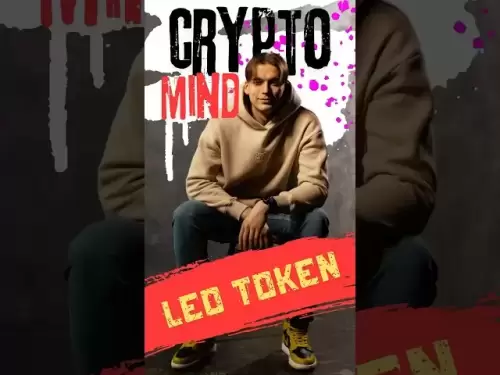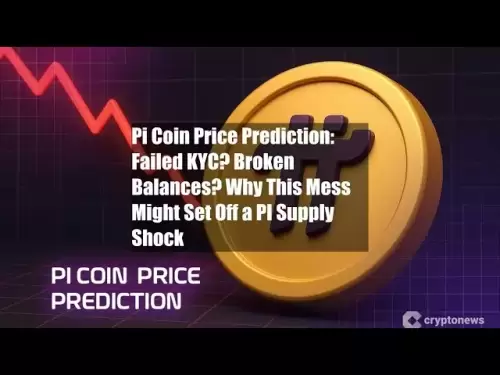-
 Bitcoin
Bitcoin $105,347.8711
0.96% -
 Ethereum
Ethereum $2,550.5078
1.39% -
 Tether USDt
Tether USDt $1.0004
-0.02% -
 XRP
XRP $2.1582
1.72% -
 BNB
BNB $651.7235
0.44% -
 Solana
Solana $146.5846
1.78% -
 USDC
USDC $0.9999
0.01% -
 Dogecoin
Dogecoin $0.1777
2.68% -
 TRON
TRON $0.2709
-0.51% -
 Cardano
Cardano $0.6373
0.79% -
 Hyperliquid
Hyperliquid $42.2043
6.47% -
 Sui
Sui $3.0476
1.60% -
 Chainlink
Chainlink $13.2702
0.27% -
 Bitcoin Cash
Bitcoin Cash $435.5686
7.57% -
 UNUS SED LEO
UNUS SED LEO $9.0412
1.45% -
 Avalanche
Avalanche $19.3181
1.40% -
 Stellar
Stellar $0.2603
1.22% -
 Toncoin
Toncoin $3.0233
2.01% -
 Shiba Inu
Shiba Inu $0.0...01213
3.46% -
 Hedera
Hedera $0.1588
2.17% -
 Litecoin
Litecoin $86.2495
3.74% -
 Polkadot
Polkadot $3.8196
0.90% -
 Ethena USDe
Ethena USDe $1.0006
0.01% -
 Monero
Monero $311.4040
0.67% -
 Dai
Dai $0.9999
0.01% -
 Bitget Token
Bitget Token $4.5613
1.06% -
 Pepe
Pepe $0.0...01117
4.95% -
 Uniswap
Uniswap $7.4671
4.11% -
 Pi
Pi $0.5866
4.86% -
 Aave
Aave $286.3474
5.97%
How to lay out the Metaverse investment track?
Understanding the metaverse landscape, including virtual reality, augmented reality, blockchain, and NFTs, provides the foundation for evaluating investment opportunities in this transformative ecosystem.
Nov 05, 2024 at 04:33 pm

How to Lay Out the Metaverse Investment Track
Step 1: Understanding the Metaverse Landscape
The metaverse is a burgeoning field, encompassing virtual and augmented reality technologies, blockchain, and other cutting-edge innovations. To comprehend this complex landscape, investors should first grasp its foundational concepts:
- Virtual Reality (VR): Immerses users in a digital realm, simulating real-world experiences and environments.
- Augmented Reality (AR): Superimposes digital content onto the real world, creating hybrid experiences.
- Blockchain: Provides secure and decentralized infrastructure for metaverse applications, including digital assets and virtual economies.
- Non-fungible Tokens (NFTs): Unique digital assets representing ownership of in-game items, avatars, virtual land, and other metaverse assets.
Step 2: Identifying Investment Opportunities
Within the metaverse's sprawling landscape, numerous investment opportunities emerge. Here are key sectors to consider:
- Virtual World Platforms: Gaming platforms, virtual meeting spaces, and interactive social environments offer potential for user acquisition and revenue generation.
- Infrastructure Providers: Hardware and software companies enabling the technical backbone of the metaverse, such as VR headsets and cloud computing services.
- Content Creators: Developers and artists creating immersive experiences, virtual environments, and digital assets that shape the metaverse's fabric.
- Blockchain Applications: Metaverse-specific cryptocurrencies, decentralized marketplaces, and NFT ecosystems provide investment opportunities in the underlying technology.
Step 3: Evaluating Metaverse Companies
When assessing metaverse companies for investment, consider the following factors:
- Team Expertise: Strong technical and industry experience in VR, AR, blockchain, and game development is crucial.
- Product Value: Analyze the quality and uniqueness of the company's metaverse platforms, content, or infrastructure services.
- User Engagement: Examine metrics such as platform usage, active users, and community activity to gauge the product's appeal and longevity.
- Financial Health: Evaluate revenue streams, profitability, and financial stability to assess the company's long-term viability.
Step 4: Managing Risk
Investing in the metaverse is not without its risks. To mitigate potential losses, adopt a prudent approach:
- Due Diligence: Conduct thorough research on target companies to identify potential red flags or inflated valuations.
- Diversification: Spread investments across multiple companies and sectors within the metaverse ecosystem.
- Risk Management Strategies: Employ hedging techniques, limit exposure to specific assets, and set stop-loss orders to minimize potential downturns.
- Monitoring and Adjustment: Stay abreast of metaverse trends, monitor investments closely, and adjust the portfolio as necessary.
Step 5: Staying Ahead of the Curve
The metaverse is a rapidly evolving field, and investors must continuously research and adapt to emerging opportunities:
- Industry News and Trends: Stay informed about metaverse developments, technological advancements, and industry partnerships.
- Attending Conferences and Events: Engage with industry experts, learn about the latest innovations, and network with potential investment partners.
- Exploring Emerging Technologies: Research future-forward technologies, such as haptic feedback, eye tracking, and volumetric capture, that will shape the metaverse's evolution.
Disclaimer:info@kdj.com
The information provided is not trading advice. kdj.com does not assume any responsibility for any investments made based on the information provided in this article. Cryptocurrencies are highly volatile and it is highly recommended that you invest with caution after thorough research!
If you believe that the content used on this website infringes your copyright, please contact us immediately (info@kdj.com) and we will delete it promptly.
- Nasdaq Advances 21Shares' SUI ETF Proposal, Kicking Off SEC Review
- 2025-06-14 16:40:13
- Solana, Litecoin, and Crypto Baskets Lead ETF Approval Race: Bloomberg
- 2025-06-14 16:40:13
- Blockchain Deposit Insurance Corporation (BDIC) Appoints Oliver Pluckrose as CTO
- 2025-06-14 16:35:13
- An upcoming Bitcoin software update will increase the data limit on a divisive function that will allow significantly more images, text and documents to be stored on the Bitcoin blockchain
- 2025-06-14 16:35:13
- GameStop (GME) shares drop after-hours as the video game retailer reported mixed results for its first quarter
- 2025-06-14 16:30:12
- Will XRP Reach $10? A Deep Dive Into Ripple's Price Potential
- 2025-06-14 16:30:12
Related knowledge

Cryptocurrency K-line chart technical analysis manual: Learn these methods to increase your chances of making a profit
Jun 11,2025 at 11:21pm
Understanding the Basics of K-line ChartsK-line charts, also known as candlestick charts, are one of the most widely used tools in cryptocurrency trading. Each K-line represents a specific time period and provides information about the open, high, low, and close prices during that interval. The body of the candle shows the relationship between the openi...

The Importance of K-line Chart Analysis in Cryptocurrency Trading: From Theory to Practical Cases
Jun 11,2025 at 04:56pm
Understanding the Basics of K-line ChartsK-line charts, also known as candlestick charts, are a visual representation of price movements over specific time intervals. Each K-line encapsulates four critical data points: the opening price, closing price, highest price, and lowest price within a given timeframe. These charts originated in Japan during the ...

Cryptocurrency K-line Chart Interpretation Guide: How Novices Can Quickly Master the Basics of Technical Analysis
Jun 10,2025 at 08:56pm
Understanding the Basics of K-line ChartsK-line charts, also known as candlestick charts, are one of the most widely used tools in cryptocurrency trading for analyzing price movements. Each K-line represents a specific time period and shows the opening, closing, high, and low prices during that interval. For novices, grasping how to read these elements ...
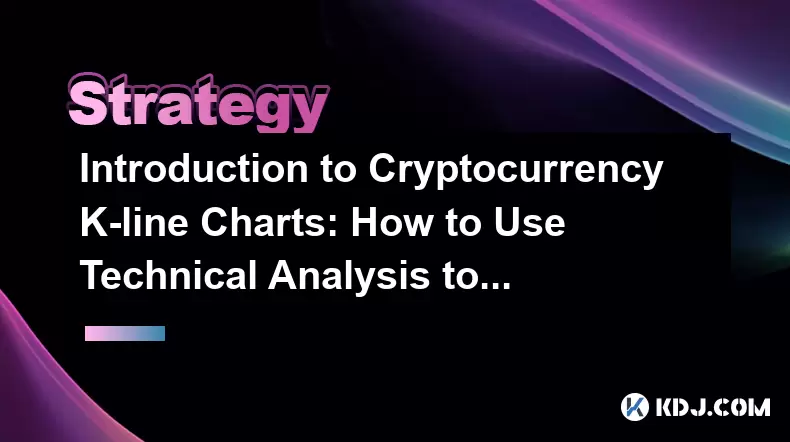
Introduction to Cryptocurrency K-line Charts: How to Use Technical Analysis to Optimize Trading Decisions
Jun 12,2025 at 03:56pm
Understanding the Basics of K-line ChartsK-line charts, also known as candlestick charts, are one of the most essential tools used in cryptocurrency trading. Originating from Japan, these charts visually represent price movements over specific time intervals. Each candlestick displays four key pieces of information: the opening price, closing price, hig...
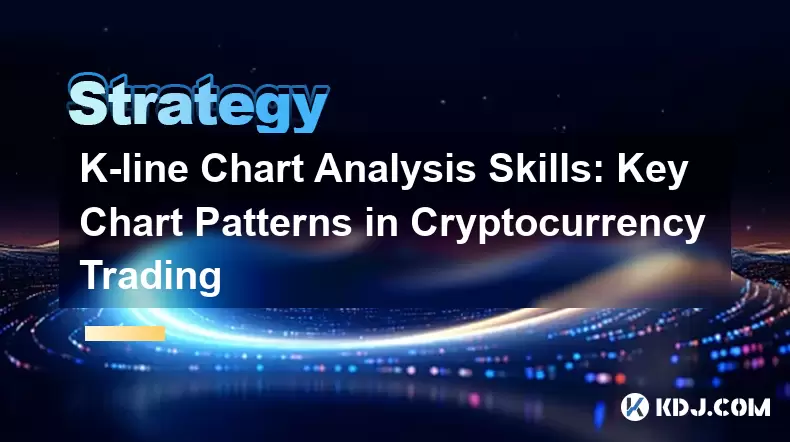
K-line Chart Analysis Skills: Key Chart Patterns in Cryptocurrency Trading
Jun 13,2025 at 10:21am
Understanding the Basics of K-line Charts in Cryptocurrency TradingK-line charts, also known as candlestick charts, are essential tools for analyzing price movements in cryptocurrency markets. Each candlestick represents a specific time frame and provides information about the open, high, low, and close (OHLC) prices during that period. In crypto tradin...
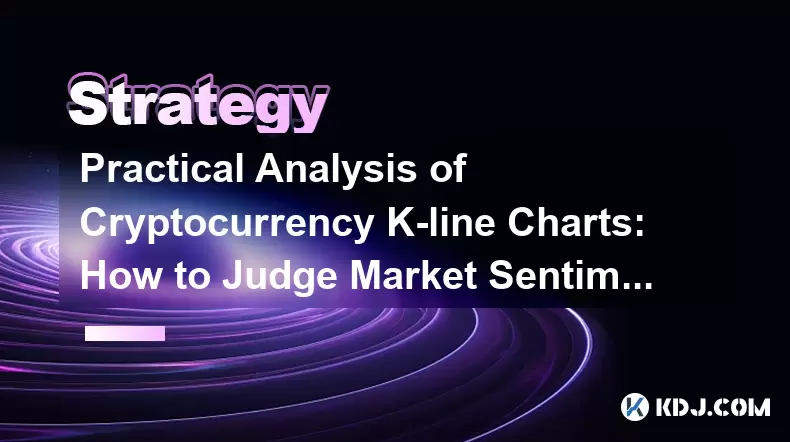
Practical Analysis of Cryptocurrency K-line Charts: How to Judge Market Sentiment through Charts
Jun 10,2025 at 09:42pm
Understanding the Basics of Cryptocurrency K-line ChartsCryptocurrency K-line charts, also known as candlestick charts, are essential tools for analyzing price movements in the crypto market. Each candlestick represents a specific time frame, such as 1 minute, 5 minutes, or even daily intervals. The structure of a K-line includes four key data points: o...

Cryptocurrency K-line chart technical analysis manual: Learn these methods to increase your chances of making a profit
Jun 11,2025 at 11:21pm
Understanding the Basics of K-line ChartsK-line charts, also known as candlestick charts, are one of the most widely used tools in cryptocurrency trading. Each K-line represents a specific time period and provides information about the open, high, low, and close prices during that interval. The body of the candle shows the relationship between the openi...

The Importance of K-line Chart Analysis in Cryptocurrency Trading: From Theory to Practical Cases
Jun 11,2025 at 04:56pm
Understanding the Basics of K-line ChartsK-line charts, also known as candlestick charts, are a visual representation of price movements over specific time intervals. Each K-line encapsulates four critical data points: the opening price, closing price, highest price, and lowest price within a given timeframe. These charts originated in Japan during the ...

Cryptocurrency K-line Chart Interpretation Guide: How Novices Can Quickly Master the Basics of Technical Analysis
Jun 10,2025 at 08:56pm
Understanding the Basics of K-line ChartsK-line charts, also known as candlestick charts, are one of the most widely used tools in cryptocurrency trading for analyzing price movements. Each K-line represents a specific time period and shows the opening, closing, high, and low prices during that interval. For novices, grasping how to read these elements ...

Introduction to Cryptocurrency K-line Charts: How to Use Technical Analysis to Optimize Trading Decisions
Jun 12,2025 at 03:56pm
Understanding the Basics of K-line ChartsK-line charts, also known as candlestick charts, are one of the most essential tools used in cryptocurrency trading. Originating from Japan, these charts visually represent price movements over specific time intervals. Each candlestick displays four key pieces of information: the opening price, closing price, hig...

K-line Chart Analysis Skills: Key Chart Patterns in Cryptocurrency Trading
Jun 13,2025 at 10:21am
Understanding the Basics of K-line Charts in Cryptocurrency TradingK-line charts, also known as candlestick charts, are essential tools for analyzing price movements in cryptocurrency markets. Each candlestick represents a specific time frame and provides information about the open, high, low, and close (OHLC) prices during that period. In crypto tradin...

Practical Analysis of Cryptocurrency K-line Charts: How to Judge Market Sentiment through Charts
Jun 10,2025 at 09:42pm
Understanding the Basics of Cryptocurrency K-line ChartsCryptocurrency K-line charts, also known as candlestick charts, are essential tools for analyzing price movements in the crypto market. Each candlestick represents a specific time frame, such as 1 minute, 5 minutes, or even daily intervals. The structure of a K-line includes four key data points: o...
See all articles
























